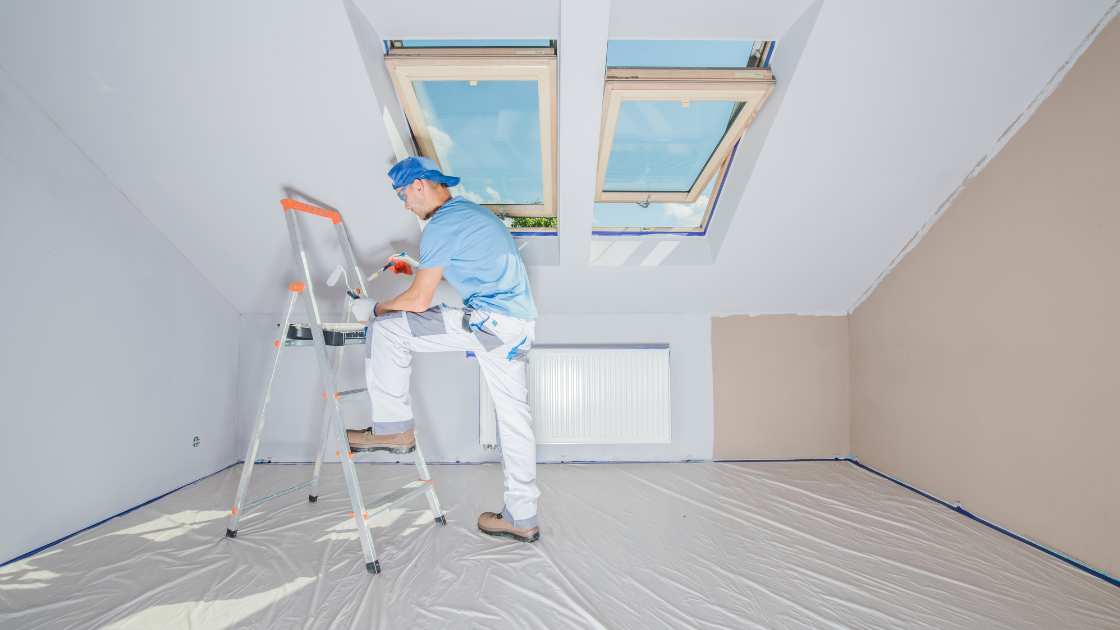Are you planning to give your home a fresh new look with a fresh coat of paint? If so, it’s essential to prepare your walls properly before starting. One of the most common issues homeowners face is peeling paint. Peeling paint can be an eyesore and can also affect the adhesion of the new paint. In this article, we’ll show you how to repair peeling paint and get your walls ready for a flawless makeover.
Get Your Walls Ready for a Makeover: How to Repair Peeling Paint
Identify the Cause of Peeling Paint
Before you start repairing peeling paint, it’s essential to identify the cause. Peeling paint can occur due to moisture, a lack of surface preparation, or the use of low-quality paint. Once you’ve identified the cause, you can take the necessary steps to prevent the issue from occurring again.
Scrape Away Loose Paint
The first step in repairing peeling paint is to remove any loose paint. You can use a scraper or putty knife to scrape away any chipped or peeling paint. Be sure to wear a dust mask and eye protection to avoid inhaling paint dust.
Sand the Surface
Once you’ve scraped away the loose paint, it’s time to sand the surface. Sanding will create a smooth surface and improve the adhesion of the new paint. Use a fine-grit sandpaper to sand the surface lightly. Be sure to clean the surface thoroughly after sanding to remove any dust or debris.
Fill in the Gaps
If there are any gaps or cracks in the surface, you’ll need to fill them in before painting. You can use a filler or putty to fill in the gaps. Apply the filler using a putty knife and smooth it out evenly. Let the filler dry according to the manufacturer’s instructions and then sand the surface lightly to create a smooth finish.
Prime the Surface
Before painting, it’s essential to prime the surface. Priming will improve the adhesion of the new paint and help it to last longer. Use a high-quality primer and apply it evenly over the surface using a brush or roller. Allow the primer to dry completely before applying the new paint.
FAQ’s
What causes paint to peel?
There are several reasons why paint may peel. One of the most common causes is moisture, which can seep into the surface and cause the paint to lose its adhesion. A lack of surface preparation, such as failure to clean and sand the surface, can also cause paint to peel. Using low-quality paint or applying paint over a glossy surface without proper priming can also result in peeling paint.
Can I paint over peeling paint?
It is not recommended to paint over peeling paint as it can affect the adhesion of the new paint. The peeling paint should be removed, and the surface should be properly prepared before applying a new coat of paint. Painting over peeling paint can result in a bumpy and uneven surface that may require additional work in the future.
Do I need to hire a professional to repair peeling paint?
Repairing peeling paint can be done as a DIY project, but it does require some knowledge and preparation. If you have experience with home improvement projects, you can follow the steps outlined in this article to repair peeling paint. However, if you are unsure or uncomfortable with the process, it may be best to hire a professional to ensure that the job is done correctly. A professional painter can also offer advice on selecting the right paint and primer for your specific surface.
Conclusion
Repairing peeling paint is an important step in preparing your walls for a fresh coat of paint. By following the steps outlined in this article, you can ensure that your walls are ready for a flawless makeover. Remember to wear protective gear and work in a well-ventilated area when repairing peeling paint. With a little effort and attention to detail, you can transform your home and give it a fresh new look.

